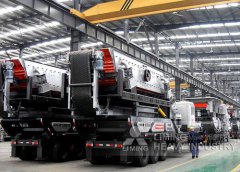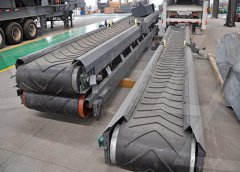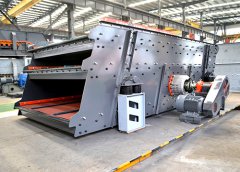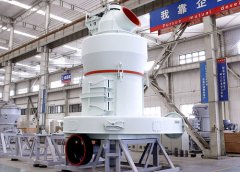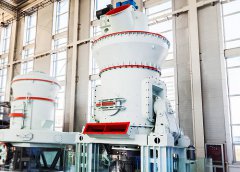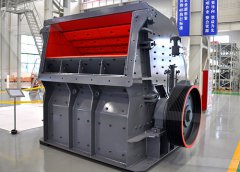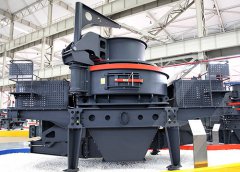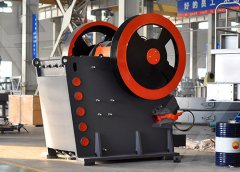
Ultra-fine grain structures in aluminium alloys by severe
In this paper, the mechanisms by which grain refinement takes place during severe deformation and the effect of the material and process variables on the 9.6.2.2 Ultrafine grinding. Ultrafine grinding is another method to process selected refractory ores/concentrates (where refractoriness to direct cyanidation arises from fine to ultrafine Ultrafine Grinding an overview ScienceDirect Topics
احصل على السعر
Mechanical properties and deformation mechanisms of
Wu, X. et al. Microstructure and evolution of mechanically-induced ultrafine grain in surface layer of Al-alloy subjected to USSP. Acta Mater. 50, 2075–2084 (2002).ResearchReviewAdvances in ultrafine-grained materials. Advances in ultrafine-grained materials. This review addresses new developments in the processing Advances in ultrafine-grained materials ScienceDirect
احصل على السعر
Production of ultra-fine grain microstructures in Al–Mg alloys
It is known that initially fine-grained low-solute aluminum alloys (e.g. Al–Fe) readily form sub-micron grain structures at room temperature at strains of ∼3–4 Ultrafine grained (UFG) Al alloys have attracted growing attention owing to their strikingly improved strength 1, 2, 3, 4. However, they usually have disappointingly Microalloying Ultrafine Grained Al Alloys with Enhanced
احصل على السعر
Improving the grindability of titanium alloy Ti–6Al–4V with
Results. The grinding forces were measured at different values of UI with and without ultrasonic vibration. Fig. 3 (a) shows the variations of the normal and Ultrafine-grained (UFG) Ti-6Al-4V alloy with average grain sizes of 305, 430, and 669 nm was fabricated by high-energy ball-milling and spark plasma sintering. The Mechanical Behaviors of Ultrafine-Grained Ti-6Al-4V Alloy
احصل على السعر
High Strain Behaviour of Ultrafine‑grained Aluminium
ultrafine-grained aluminium alloys to study the various dynamic failure conditions such as unpredictable crashes, high rate grinding and machining, explosive fragmentation and welding, etc. Further, these studies were helped in improving the high impact strength of Al alloys by analysing and inves-tigating the deformation mechanism.1. Introduction. Mg alloys have drawn more and more attention in recent decades due to their abundance, low density, and high specific mechanical properties [1], [2].However, they still suffer from low absolute strength compared to the generally commercially applied Al alloys and steels, as well as poor ductility due to insufficient slip A near-isotropic ultrafine-grained Mg-Gd-Ag alloy with high
احصل على السعر
Energy-Efficient Advanced Ultrafine Grinding of Particles
The present literature review explores the energy-efficient ultrafine grinding of particles using stirred mills. The review provides an overview of the different techniques for size reduction and the impact of energy requirements on the choice of stirred mills. It also discusses the factors, including the design, operating parameters, and feed material Alloys for TEM were mechanically grinding to a thickness of ~50 μm using SiC grinding paper from 800 to 3000 grit, followed by twin-jet electropolishing in a mixture 30% nitric acid and 70% methanol at −30 °C with a working voltage of 20 V. Observations were carried out on a JEOL 2100 F operating at 200 kV. Ultrafine grained Al 7075Effect of magnetic field on precipitation kinetics of an ultrafine
احصل على السعر
Polymers Free Full-Text Ultrafine Friction Grinding of
However, Liu et al. decreased the diameter of bagasse and Kraft cellulose fibers by ultrafine grinding until 23 and 25 nm, respectively. Reducing lignin particle size by ultrafine friction agreed with the values reported for cellulosic nanofibers by other researchers [ 25,27,28,35 ].Wu, X. et al. Microstructure and evolution of mechanically-induced ultrafine grain in surface layer of Al-alloy subjected to USSP. Acta Mater. 50,2075–2084 (2002). CAS Google ScholarMechanical properties and deformation mechanisms of
احصل على السعر
陶乃镕-中国科学院大学-UCAS SEP 教育业务接入平台
(26) Microstructure and evolution of mechanically-induced ultrafine grain in surface layer of Al-alloy subjected to USSP, Acta Materialia, 2002, 第 2 作者 (27) Surface nanocrystallization of iron induced by ultrasonic shot peening,, Nanostructured Materials, 1999, 第 1 作者Ultrafine grained (UFG) Al alloys have attracted growing attention owing to their strikingly improved strength 1,2,3,4.However, they usually have disappointingly low ductility at ambientMicroalloying Ultrafine Grained Al Alloys with Enhanced
احصل على السعر
Production of ultra-fine grain microstructures in Al–Mg alloys
1.. IntroductionThere are many potential advantages in the use of alloys with ultra-fine, or sub-micron grains for structural applications. At low temperatures aluminum alloys with sub-micron grain sizes have been shown to have higher elongation and yield strengths, compared to alloys with coarse grain sizes [1], [2], and it has recently Ultrafine-grained (UFG) Ti-6Al-4V alloy with average grain sizes of 305, 430, and 669 nm was fabricated by high-energy ball-milling and spark plasma sintering. The mechanical behaviors of consolidated titanium alloy with different grain sizes were studied under uniaxial compression at the quasi-static strain rate of 1 × 10−3 s−1 and high strain Mechanical Behaviors of Ultrafine-Grained Ti-6Al-4V Alloy
احصل على السعر
Additive manufacturing of titanium alloys with enhanced
For instance, Wang et al. [10] prepared Ti–Fe alloys with a combination of high strength and good ductility using elemental powders Fe and Ti. Zhang et al. [ 11 ] developed Ti–Cu alloys with both fine equiaxed prior-β grains and an ultrafine eutectoid lamellar structure by additive manufacturing, thereby contributing to promisingWheel normal grinding was also developed by Yamamoto et al. [213], using three simultaneously moving linear axes (X, Y, Z) and a 45°-tilted grinding spindle in the Y–Z-plain. By moving the grinding wheel along a certain curve in space it is possible to maintain tool normal conditions, i.e. the circular grinding zone of the wheel surface doesUltra-precision grinding ScienceDirect
احصل على السعر
Microstructure and Mechanical Properties of Ultrafine Quaternary Al
The microstructure evolution and mechanical properties of quaternary Al-Cu-Si-Mg eutectic alloy prepared via arc melting and suction casting were studied. This alloy exhibits a single endothermic DSC peak with a melting temperature of 509 °C upon heating, suggesting a eutectic reaction. The cast alloy microstructure consisted of four phases, α Additive manufacturing, often known as three-dimensional (3D) printing, is a process in which a part is built layer-by-layer and is a promising approach for creating components close to their final (net) shape. This process is challenging the dominance of conventional manufacturing processes for products with high complexity and low material Additive manufacturing of ultrafine-grained high-strength
احصل على السعر
High Strain Behaviour of Ultrafine‑grained Aluminium Alloys
In the present study, the various literature based on the high strain rate behaviour of the ultrafine-grained (UFG) aluminium alloys produced through severe plastic deformation techniques have been discussed. It was observed from various literature that under the high strain rate from (3000–120000 s−1) adiabatic shear bands (ASBs) were An ultrafine-grained (UFG) Al–Cu–Mg alloy (AA2024) was produced by surface mechanical grinding treatment (SMGT) with a high strain rate, and the precipitation behavior inside the grain and at the grain boundary was investigated. During SMGT, element segregation at the boundary was rarely observed, since the solute atoms were impeded Precipitation Behavior during Aging Operations in an Ultrafine
احصل على السعر
Microstructure and evolution of mechanically-induced ultrafine
The experimental material was a high purity aluminum alloy 7075, with a composition (wt pct) of 2.5 Mg, 5.6 Zn, and 2.2 Cu, balance Al. A commercially available plate was cut into pieces with 100×100×10 mm 3 in dimension. A smooth surface finish was attained on the faces by polishing on 700-grade SiC paper.Before the surface mechanical grinding treatment (SMGT), alloy rods of 150 mm in length and 20 mm in diameter were solution treated at 540 °C for 6 h in vacuum followed by water quenching for obtaining supersaturated solid solution. Segregation of Cu along GBs was observed in an ultrafine grained Al–0.3 wt%Cu alloy prepared by Deformation induced grain boundary segregation in nanolaminated Al–Cu alloy
احصل على السعر
Microstructures and Hardness Prediction of an Ultrafine-Grained Al
High-pressure torsion (HPT) is a high efficiency processing method for fabricating bulk ultrafine-grained metallic materials. This work investigates microstructures and evaluates the corresponding strengthening components in the center of HPT disks, where effective shear strains are very low. An Al-4.63Cu-1.51Mg (wt. %) alloy was The technology is a sulfate based process employing ultrafine grinding (P 80 of 10–15 μm) at temperatures of around 85–90 °C, atmospheric pressure to accelerate the kinetics and increase copper recovery level from chalcopyrite, in conventional agitated tanks with corrosion resistant alloy steel shells (Nazari et al., 2012a; Kowalczuk andUltrafine Grinding an overview ScienceDirect Topics
احصل على السعر
